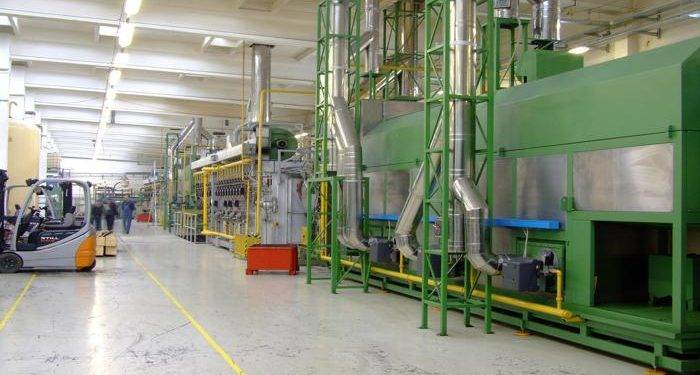Manufacturing facilities face increasing pressure to improve efficiency while maintaining competitive costs and meeting strict quality standards. Modern industrial infrastructure requires careful integration of multiple systems that work together to create optimal production environments.
Technology advances in automation, environmental controls, and precision equipment have opened new possibilities for facility optimization. Understanding these interconnected systems helps facility managers make informed decisions about infrastructure investments and operational improvements.
Electrical System Infrastructure
Power distribution systems in manufacturing facilities must handle varying loads from different equipment types while maintaining stable voltage levels throughout operations. Redundant power feeds and uninterruptible power supplies protect against production downtime caused by electrical failures or grid instability.
Proper grounding systems prevent electromagnetic interference that can disrupt computerized manufacturing equipment and quality control systems. Energy monitoring capabilities allow facility managers to identify inefficient equipment and optimize power consumption during peak demand periods.
Automation Integration Requirements
Modern manufacturing relies heavily on interconnected systems that communicate through industrial networks and control protocols. Programmable logic controllers coordinate equipment timing and sequencing to maintain consistent production flow and product quality.
Data collection systems gather real-time information about equipment performance, allowing for predictive maintenance and process optimization. Network security becomes increasingly important as manufacturing systems connect to enterprise software and cloud-based analytics platforms.
Precision Machine Tooling
Automated production lines demand extremely tight tolerances and consistent performance from cutting tools, fixtures, and measurement equipment. High-speed spindles and advanced tooling materials allow for faster cycle times while maintaining surface finish quality and dimensional accuracy.
Temperature-controlled environments prevent thermal expansion that could affect precision machining operations and final product specifications. Companies like Munoz Technical Consulting provide comprehensive solutions, including tool selection, holder systems, and performance monitoring services for automated manufacturing applications.
Material Handling and Storage Systems
Efficient material flow reduces work-in-progress inventory and minimizes handling damage throughout the production process. Automated storage and retrieval systems maximize vertical space utilization while providing quick access to raw materials and finished goods.
Conveyor systems and robotic material handling equipment reduce labor costs and improve workplace safety by eliminating repetitive lifting tasks. Proper warehouse management systems track inventory levels and locations to prevent stockouts and optimize storage space allocation.
Quality Control and Inspection Systems
Consistent product quality requires sophisticated measurement and testing equipment integrated throughout the production process. Coordinate measuring machines and optical inspection systems detect defects before they propagate through subsequent manufacturing steps.
Statistical process control software analyzes quality data trends to identify potential issues before they result in production delays or customer complaints. Environmental controls in inspection areas maintain stable temperature and humidity conditions that could affect measurement accuracy.
Industrial Heat Pump Systems
Large manufacturing facilities benefit significantly from heat pump technology that can provide both heating and cooling while recovering waste heat from production processes. These systems operate more efficiently than traditional HVAC equipment by transferring heat rather than generating it through combustion or electrical resistance.
Variable refrigerant flow systems allow for zone control throughout different areas of the facility, optimizing comfort levels and energy consumption. Companies like Dalrada Climate Tech offer industrial-grade heat pump solutions with specialized controls and monitoring systems designed for manufacturing environments.
Compressed Air and Utility Distribution
Reliable compressed air systems power pneumatic tools, actuators, and control systems throughout manufacturing operations. Proper sizing and layout of air distribution networks prevent pressure drops that could affect equipment performance and cycle times.
Air treatment equipment removes moisture and contaminants that could damage sensitive components or affect product quality. Energy-efficient compressors with variable speed drives adjust output to match demand fluctuations and reduce operating costs.
Safety and Environmental Systems
Manufacturing facilities must comply with occupational safety regulations and environmental protection standards that vary by industry and location. Emergency shutdown systems and fire suppression equipment protect workers and valuable production equipment from potential hazards.
Ventilation systems remove airborne contaminants and maintain comfortable working conditions while meeting air quality requirements. Waste treatment systems handle process chemicals and byproducts according to environmental regulations and corporate sustainability goals.
Data Analytics and Performance Monitoring
Real-time data collection from manufacturing equipment provides valuable insights into production efficiency and equipment health across all facility operations. Advanced analytics platforms process sensor data to identify patterns that indicate potential problems or optimization opportunities.
Machine learning algorithms can predict equipment failures and recommend maintenance schedules based on actual operating conditions rather than predetermined time intervals. Integration with enterprise resource planning systems creates comprehensive visibility into production costs, quality metrics, and overall equipment effectiveness.
Lighting and Visual Environment
Proper lighting design significantly impacts worker productivity, safety, and product quality in manufacturing environments. LED lighting systems provide consistent illumination while consuming less energy and requiring minimal maintenance compared to traditional fluorescent fixtures.
Task-specific lighting requirements vary throughout different work areas, with precision assembly operations needing higher light levels than general material handling zones. Automated lighting controls adjust brightness based on occupancy and natural light availability, reducing energy consumption while maintaining optimal working conditions.
Water Treatment and Process Cooling
Manufacturing processes often require large quantities of treated water for cooling, cleaning, and product formulation applications. Water treatment systems remove impurities that could damage equipment or affect product quality while meeting regulatory requirements for discharge.
Closed-loop cooling systems recirculate water through heat exchangers and cooling towers to maintain consistent temperatures in production equipment. Proper water management reduces operating costs while meeting environmental compliance standards for water usage and discharge quality.
Noise Control and Acoustic Design
Industrial equipment generates significant noise levels that can affect worker comfort, productivity, and regulatory compliance with occupational safety standards. Sound-absorbing materials and barrier systems reduce noise transmission between different work areas while maintaining open communication pathways.
Vibration isolation systems prevent machinery noise from transmitting through building structures to adjacent areas. Acoustic design considerations during facility planning prevent noise-related problems that would be expensive to address after construction completion.
Maintenance and Reliability Programs
Preventive maintenance strategies extend equipment life and reduce unexpected breakdowns that disrupt production schedules. Condition monitoring systems track vibration, temperature, and other parameters that indicate developing problems before they cause failures.
Maintenance management software schedules routine tasks and tracks spare parts inventory to optimize technician productivity. Reliability engineering principles help identify critical failure modes and implement design improvements that reduce maintenance requirements over time.
Optimizing industrial facility infrastructure requires comprehensive planning that considers the interconnected nature of modern manufacturing systems. Success depends on understanding how different infrastructure components work together to support production goals while maintaining cost-effectiveness and regulatory compliance.
Technology continues to advance rapidly, offering new opportunities for facility improvements through automation, energy efficiency, and data-driven decision making. Facility managers who take a systematic approach to infrastructure optimization can achieve significant improvements in productivity, quality, and operational costs while positioning their operations for future growth and adaptation.









